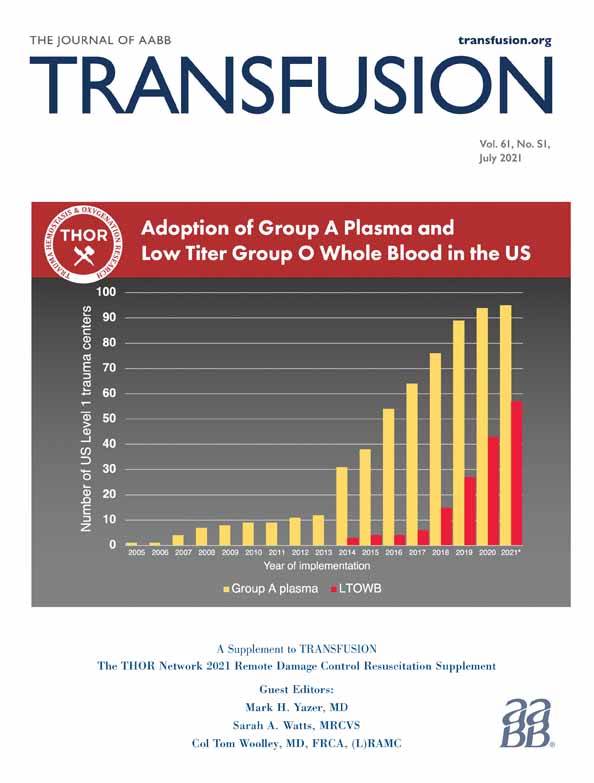A new definition for massive transfusion in the modern era of whole blood resuscitation
Our work has no outside sources of support or funding to report. It has not been presented at any meeting.
Abstract
Background
Multiple thresholds are defined to identify patients at risk of death from hemorrhage, including massive transfusion (MT), critical administration threshold (CAT), and resuscitation intensity (RI). All fail to account for the use of whole blood (WB). We hypothesized that a definition including WB transfusion would better predict early mortality following trauma.
Methods
This is a retrospective review of all trauma patients with activation of the MT protocol from December 2018 to February 2020. Combinations of WB, RBCs, and fresh frozen plasma (FFP) units transfused during the initial hour of resuscitation were compared using receiver operating characteristic and area under the receiver curve (AUC) for 3- and 6-h mortality. WB massive transfusion (WB MT) score was defined as the sum of each unit RBC plus three times each unit of WB transfused within the first hour of resuscitation.
Results
There were 235 patients eligible for analysis with 60 resuscitated using ≥1 unit of WB. Overall, 27 and 29 patients died in the first 3 and 6 h, respectively. WB MT ≥7 had the greatest 3-h and 6-h mortality AUC values (0.78 and 0.79, respectively) when compared to MT, CAT, RI4+, and other attempted definitions using units of WB, RBC, and FFP. Compared to WB MT−, WB MT+ patients died at significantly higher rates at 3 h (28.9% vs. 3.1%, p < .001), 24 h (35.5% vs. 5.7%, p < .001), and 28 days (42.1% vs. 11.9%, p < .001).
Conclusion
WB MT is the first measure of massive resuscitation to incorporate WB and better identifies early mortality than other definitions.
CONFLICT OF INTEREST
Dr. John B. Holcomb is a co-founder and on the Board of Directors of Decisio Health, on the Board of Directors of QinFlow and Zibrio, a Co-inventor of the Junctional Emergency Tourniquet Tool, an adviser to Arsenal Medical, Cellphire, Spetrum, PotentiaMetrics, and Wake Forest Institute of Regenerative Medicine. Dr. Jan O. Jansen is a consultant for CSL Behring. The remaining authors declare no conflicts of interest.




